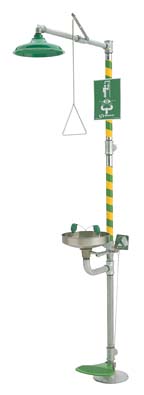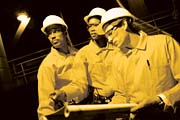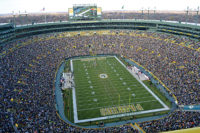
The plethora of emergency equipment choices available to the safety professional can be quite daunting. Where in the past there were fewer manufacturers offering substantially fewer product alternatives, today things have certainly changed. And, making matters more complicated, there is an ever-increasing universe of potential commercial and industrial risks from which to protect employees and others. So, how does one navigate through the maze of alternatives? Answer: With your eyes wide open!
The first thing to realize is that emergency equipment is a product category in which you get what you pay for. There is no free lunch! The better equipment, offering superior features and content, will be more expensive than lesser products. So, the first rule becomes: Decide which features and capabilities are mandatory, and make certain that your brand-to-brand comparisons compare "apples to apples." You certainly don't want to buy features and content that you don't need. Avoid over-specifying as a way to save on cost without cutting corners.

- Integral flow controls. Quality combination shower/eyewash systems should include an integral flow control mechanism. This feature assures that the flow to both the shower head and eyewash will remain consistent in the event that both are needed simultaneously. In the absence of an integral flow control, the flow pattern to either the shower or eyewash (or both) could diminish during simultaneous use. These decreased flows could easily fall below ANSI or other requirements.
- Colors and high-visibility pipe markers. In both OSHA and ANSI literature, the color green means "safety." Specifically, its application is reserved for the "location of safety equipment, respirators, safety showers, etc." Standardizing your operation to be consistent with this coding protocol assures compliance while minimizing risk.
There are differences in how the pipe markers and signage that identify emergency equipment are handled by the various manufacturers. Some are more effective than others-and cost once again can play a part in the final product.
- Auxiliary actuation. Some product alternatives provide for both hand (flag handle or pull-rod) and foot (additional foot treadle) actuation. This can be a critically important feature in many applications.
- Integral, visual air gap to separate supply and waste. Although only required by code in some areas, equipment that is designed with an integral visual air gap between supply and waste lines provides a high degree of peace of mind. Employees and others feel much more comfortable with visual evidence of separation of what can look like a "shared or common line." Some equipment provides this important feature as part of the base product.
- Re-circulation connection available. Another important base product value-added feature is a standard recirculation connection. In many applications, it is advantageous to recirculate tempered water through the supply side of the system. That way, the user has almost immediate access to warm water. For those applications or ones that could be retrofitted with tempering later, it is very helpful to have the connection included in the base product.
- Pre-assembly and pre-testing. Some available products feature substantial pre-assembly and pre-testing at the factory prior to shipment. While these features obviously only apply to the initial installation of the equipment, they should be significant considerations at purchase time. Pre-assembly provides the benefit of having experts, for whom emergency equipment is a core-competency, assemble critical components of your product for you. This also affords the manufacturer the opportunity to pressure-test the assembly, assuring both integrity and operation. And, the pre-assembly function often saves up to 40% on the final installation labor!

While there is no industry-accepted standard for life cycle, there are obvious differences between products that will play a principle role in longevity. Pay particular attention to the materials used and the thickness of component parts, such as receptors, handles and treadles.
Finally, look for third party certification, including ANSI Z358.1.
Choosing the right combination emergency shower and eyewash doesn't have to be complicated. It just takes systematic establishment of your requirements and a review of the alternative products available. If properly done, the "perfect" choice becomes pretty obvious!
